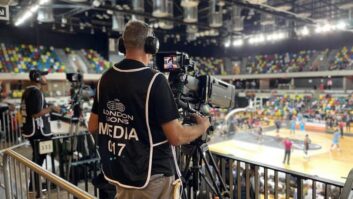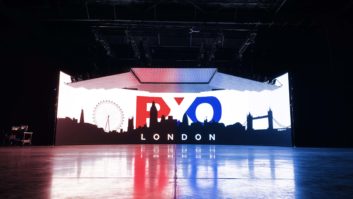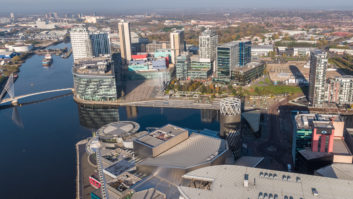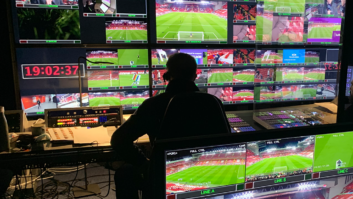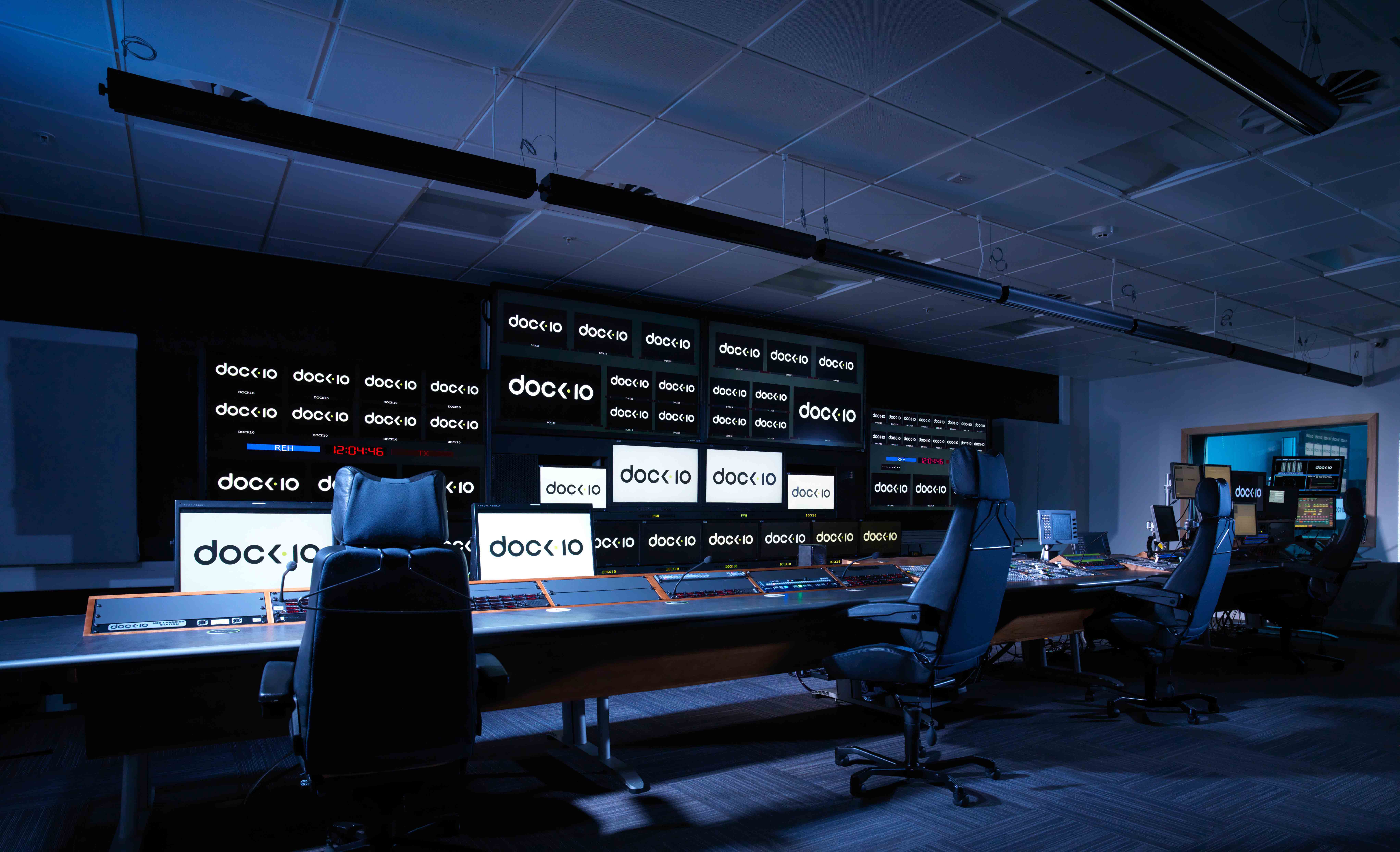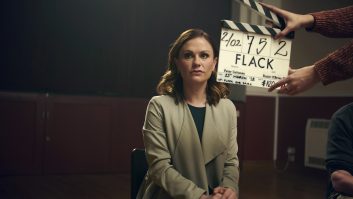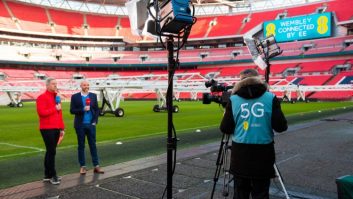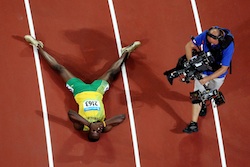
As the Host Broadcaster, OBS is chiefly responsible for providing the images and sound of the Olympic Games as a service to all broadcast organisations who have purchased the television and radio rights. Philip Stevens finds out how the host broadcaster for the fast-approaching Games is going about its business.
Created by the International Olympic Committee, Madrid-based Olympic Broadcasting Services (OBS) is responsible for handling the Host Broadcaster function for all Olympic Games — Summer, Winter and Youth. Although it has been in existence since 2001, the organisation’s first Games — a joint venture between OBS and the Chinese organising committee — was the 2008 event held in Beijing. The 2010 Olympic Winter Games in Vancouver marked the first time that the Host Broadcast was solely an OBS operation.
OBS produces and transmits the unbiased live radio and television coverage, known generally as the International Signal or the World Feed for the various Rights Holder Broadcasters (RHBs).
In addition to developing a multilateral production plan for the International Signal, OBS provides additional services, equipment, facilities and supplies to the RHBs in order to help them produce their own unilateral production coverage.
Central to all the OBS operations is the International Broadcast Centre (IBC), which is located in the Olympic Park in Stratford, just east of the capital. The construction of the building shell started in March 2009 and was completed in July 2011.
OBS took delivery of the IBC in August 2011 at which time the construction of the broadcast installation began. The IBC will officially open next month. Covering a functional space of 48,300 square metres, the IBC houses the technical and administrative facilities for both OBS and the RHBs including edit suites, control rooms, studios and offices.
The signals associated with the multilateral transmission and the unilateral coverage are sent from the Technical Operations Centre in the broadcast compound at each venue to the IBC via a fully redundant fibre optic network, radio frequency, microwave or satellite links. Once at the IBC, these signals are controlled, processed and circulated to the RHBs through OBS’ Distribution Centre. Here the signals are synchronised and processed to provide both Standard (SD-SDI) and high definition video signals. All international multilateral signals available at the IBC will be in high definition 1485 Mbps 1080i/50 SMPTE-292M with up to eight embedded audio channels.
All signals to be distributed outside OBS will pass through the Transmission Centre. The Broadcast Distribution Network transmits the ITVR and the unilateral audio, video, commentator and coordination circuits from OBS to international gateways for worldwide delivery to the RHBs home countries. The Transmission Centre also sends any necessary return video circuits to venues or other sites.
“Through its experience of broadcasting Olympics, and several years of meticulous planning, OBS will ensure that Rights Holding Broadcasters are provided with the world class core coverage and broadcast facilities they require to take the Games to all parts of the globe,” states Paul Mason, the head of OBS London. “In order to achieve this, at Games Time the International Broadcast Centre will be the largest broadcast production centre in the world.”
Scale of the challenge
The Olympic Games are the world´s largest broadcast operation, with an estimated global audience of 4.8 billion people in more than 200 countries and territories. Approximately 13,000 Rights Holding Broadcasting personnel will be accredited to provide coverage for the Games.
The OBS team itself will increase from 150 full time employees to a workforce of around 5600 people by the start of the Games. This figure includes the more than 1000 students who will be hired through the Broadcast Training Programme (BTP) – a project involving 10 Universities and Colleges across the UK.
“The BTP offers students the opportunity to work for OBS in 12 different paid positions during the Games. It brings with it a form of legacy which is both portable and lifelong for the students – that is, the opportunity to be working and training alongside top broadcast professionals from around the world,” reports Mason.
Beyond the large number of personnel, the OBS and its suppliers will utilise more than 1000 cameras, including 40 High Super Slow Motion units, to produce more than 5600 hours of coverage, all in high definition.
Overall, OBS has secured 52 mobile units for the coverage – with 36 coming from providers located outside of the UK. Additionally, six flyover systems and 15 independent audio production units will be used. Furthermore, OBS will deploy a 3D production team consisting of three OB vans and six separate ENG crews. Typically, 11 3D cameras will be utilised at selected venues for this coverage. Additionally, there will be a 3D operations centre in the International Broadcast Centre (IBC) to receive and distribute the signals to Pool participants and to produce a daily highlights programme as part of the 3D channel transmission.
OBS will offer parallel live coverage in 3D to those RHBs who have signed up to the unilateral pool. In total, more than 230 hours of 3D coverage will be produced.
Meeting the standard
OBS has minimum technical requirements for all OB vans – whether 2D or 3D. The first step in defining those requirements was a document sent to potential vendors outlining OBS’ technical expectations and the vendors’ compliance to those requirements.
A follow-up technical specification document was then completed by the van provider prior to that vehicle being assigned to a venue. That assignment was based on the vehicle’s technical capabilities.
The OBS production department is ultimately responsible for determining the number of cameras and their locations required for the appropriate coverage of each sport at a particular venue. These camera locations are determined after multiple surveys by the different OBS departments and include not only positions for the multilateral coverage, but also unilateral positions available to RHBs, either on a permanently booked or on a first-come, first-served basis.
During the Games themselves, the output of each OB van is centrally monitored for signal quality to make sure that the technical aspects adhere to specifications.
Generally, the feeds provided to RHBs are dirty. Specifically, the International Television Signal includes the live camera cut, all replays (including the Olympic Replay Transition to open and close the replay sequence), all Results Graphics, all Timing Graphics (Race Clocks, Crunch Scoreboards with Clocks etc) and all Production Enhancements, such as virtual graphics, World Record lines, best throw/jump lines and GPS Positioning Graphics.
OBS’ graphic department specifies all characteristics from the colours to the size, placement, shape and design of each of the graphic elements. It has been decided that all television graphics and text will be presented in English.
The Olympic Graphics look has been co-ordinated with the pictograms and colours from the London Organising Committee’s ´Look of the Games´. This has resulted in a graphics package specific to London 2012. Animated elements and dynamic movement will be incorporated, and while all information and essential graphic elements will be contained within the traditional 4:3 safe title area, some new design elements will extend on to 14:9 graphic canvas.
All the design elements will be fully integrated with technical data to ensure that graphics are both readable and quickly understandable by the worldwide television audience. Additionally, the design will consider the High Definition signals being produced across all sports.
Tapeless technology
OBS will work in a completely tapeless environment as far as origination and recording of events are concerned. That said, there will be a library containing videotape archives of all live coverage produced during Olympic Games competition. The OBS’ own Video Archive System will be responsible for recording all live venue feeds, selected other footage, all output broadcast on the Olympic News Channel, as well as selected media conferences.
A dubbing service will be provided to RHBs requiring copies of any portion of Olympic competition or stock/archival footage leading up to the Games. In addition, OBS will make available access to a Central Video Server at the IBC for Rights Holders who wish to acquire archived content from the multilateral signals. Content in the Central Video Server will be encoded in AVC-Intra 100 with eight audio channels (Stereo ITVS and surround 5.1).
OBS, as the Host Broadcaster, is responsible for producing and transmitting the live radio and television coverage of the Paralympic Games. More than 700 hours of live coverage in nine competition venues will be provided, with ENG coverage at all the remaining non-live venues.
For the benefit of the New Media operations of Rights Holders, or other applications, OBS will provide international signals from all of the venues in four different compression profiles encapsulated in IP (16-20 Mbps, 6-10 Mbps, 1.5-2.5 Mbps, 2500-500 Kbps). This has been provided for RHBs who may wish to carry the Games´ competitions on internet, mobile phone and other platforms.
OBS has brought together some of the best and most experienced broadcast talent from around the globe to provide the multilateral coverage of each of the 26 Olympic sports. These venue production teams, from more than 18 different countries, have been hired because of their expertise within their associated sports/events.
Manolo Romero, CEO of OBS, concludes: “The fact that more and more countries are able to enjoy watching the Olympic Games and the excitement, drama and good feelings they produce proves not only that the Olympic movement itself continues to grow but also, that OBS is successfully capturing the unique atmosphere of the venues and the host city.”
